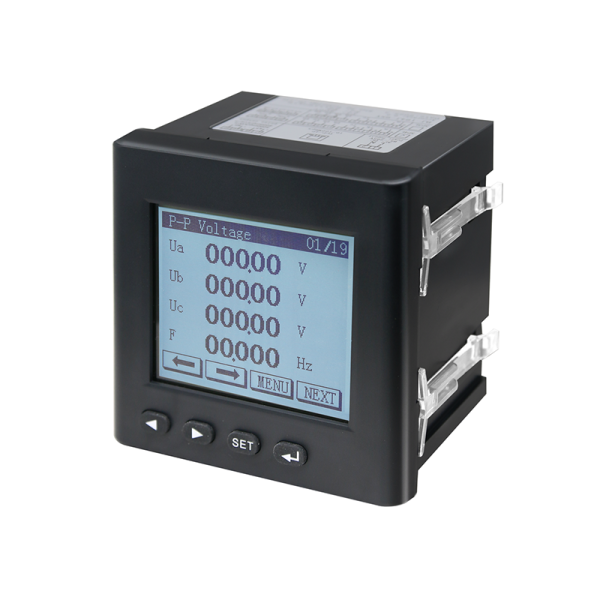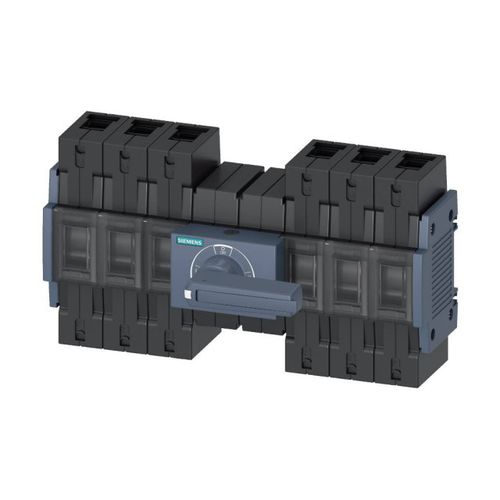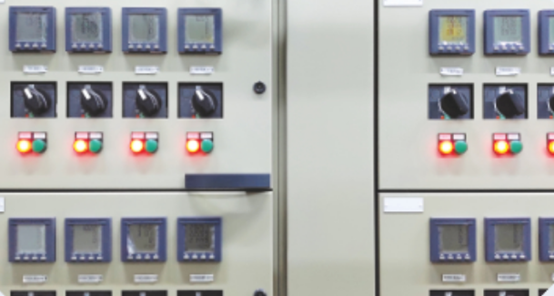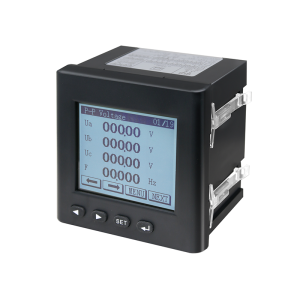Abstract: What is a multifunction meter? You can learn it from the definition, types, working principles, application, accuracy, and difference between energy meter and multifunction meter.

What is an MFM Meter?
MFM Meter, known as multi function meter, is a device used to measure, monitor, and control various parameters in power systems. They are widely used in industrial, commercial, and residential power systems to ensure the safety, stability, and efficient operation of power systems. Multi-function meters can measure multiple parameters at the same time, such as voltage, current, power factor, active power, reactive power, electric energy, etc., and can be analyzed and reported based on these data.
Types of Multifunction Meters
Sell-Best Multifunction meters can be divided into different types by single-phase, three-phase, digital, and analog, brands.
1. Single-phase and three-phase multifunction meters:
Single-phase multifunction meters are suitable for use on single-phase power systems and are typically used in homes and small commercial establishments.
Three-phase multifunction meters are suitable for three-phase power systems and are widely used in industrial and large commercial places.
2. Digital and analog Multifunction Meter:
Digital multifunction meters use digital technology with high precision and programmable functions and are usually equipped with an LCD to display parameters.
Analog multifunction meters use traditional analog circuits and generally have simple operation and lower cost.
3. Famous brand’s multifunction meter
In Sell-best’s product line, there are a variety of multi-function watches covering various brands and styles. Which Brands you can find? including Delta, verities, Rishabh, Selec, Siemens, Blue Jay, and other well-known brands.

Multifunction meter working principle
How a multifunction meter works involves multiple components and processes. You can learn the working principle of a multifunction meter from the following five aspects:
1. Current and voltage measurement
Multifunctional meters measure current and voltage through sensors. Current measurement is usually done with a current transformer (CT), while voltage measurement is done with a voltage transformer (VT). These sensors convert current and voltage signals into small signals proportional to their ratio, which are then processed by the meter’s circuitry.
2. Calculation of power and power factor
Based on current and voltage measurements, the multi-function meter can calculate various power parameters, including active power, reactive power, and apparent power. Active power is the power that performs useful power in the power system, while reactive power is the power that does not produce useful power but affects the grid load. The power factor is the ratio of active power to apparent power, which reflects the load characteristics of the power system.
3. Energy points
Multifunctional meters can also integrate electrical energy to calculate the amount of electrical energy consumed within a certain time. This is very important for metering and cost accounting, especially in commercial and industrial premises.
4. Data processing and display
The multi-function instrument integrates a processor and memory to process the collected data and perform calculations. This data is usually displayed through an LCD screen or digital interface for user viewing and analysis.
5. Communication and Control
Some advanced multi-function instruments also have communication interfaces that can exchange data with other devices or monitoring systems. This allows users to remotely monitor and control power systems, allowing for more efficient energy management and maintenance.
Multifunction meter use in industry
Multifunction Meters (MFMs) play a vital role in the industrial sector, where precise monitoring and control of electrical parameters are essential for efficient operations. These instruments are used across a wide range of industrial sectors to monitor the performance of electrical systems, ensure compliance with safety standards, and optimize energy usage. Here are some key applications of multifunctional instruments in industry:
Power Quality Monitoring: Multifunctional meters are widely used to monitor power quality parameters such as voltage fluctuations, harmonic distortion, and power factor. By continuously monitoring these parameters, the industry can identify and correct problems that could lead to equipment failure or production interruptions.
Energy Management: Multifunctional meters help industry track energy consumption patterns and identify energy-saving opportunities. By analyzing the data collected by the meters, industrial facilities can implement strategies to reduce energy waste, optimize load distribution, and reduce operating costs.
Load Management: Multifunctional instruments allow the industry to monitor the distribution of electrical loads between different phases of the system. This information helps with load balancing, ensuring electrical equipment is running efficiently and minimizing the risk of overloading or underutilizing assets.
Fault Detection and Diagnosis: The multi-function instrument is equipped with advanced diagnostic functions to detect and diagnose electrical faults in real-time. By promptly identifying problems such as short circuits, ground faults, or voltage drops, the industry can minimize downtime and prevent costly equipment damage.
Compliance Monitoring: The industry must comply with various regulatory standards and safety guidelines related to electrical systems. Multifunctional meters ensure industrial facilities comply with regulatory requirements by continuously monitoring parameters such as insulation resistance, ground leakage current, and transient voltage.
Overall, multi-function instruments are indispensable tools in the industrial sector, providing comprehensive monitoring and control functions to ensure the reliability, efficiency, and safety of electrical systems.
How accurate is a multifunction meter?
The accuracy of a multifunctional electric meter is one of the important indicators for evaluating its performance. The accuracy of an electric meter is usually described by its measurement error and accuracy rating.
Measurement error: Measurement error refers to the difference between the value measured by the meter and the true value of the amount of electricity being measured. It is usually expressed as a percentage or absolute value. For example, if a meter has a measurement error of ±0.5%, then when measuring 1000 kWh, its measurement result may differ from the true value by ±5 kWh.
Accuracy level: Accuracy level is a classification of meter accuracy based on international standards (such as IEC standards). Common accuracy levels include 0.5, 1.0, 2.0, etc. Among them, the 0.5 grade electric meter has the highest accuracy and the smallest error, while the 2.0 grade electric meter has lower accuracy and relatively larger error.
Generally speaking, multi-function meters are designed and manufactured to maximize their accuracy and are calibrated and tested to ensure they meet specific accuracy requirements. In practical applications, users need to choose the appropriate meter model and accuracy level based on specific measurement needs and accuracy requirements. In addition, regular calibration and maintenance are also important means to ensure the accuracy of the meter to ensure that it maintains good measurement performance during long-term use.
What is the difference between an energy meter and an MFM?
Energy meters and multi-function meters (MFM) play different roles in the power system, with obvious differences:
Differences in Functions and Uses
Energy Meter: An energy meter is mainly used to measure the consumption of electrical energy for measurement and billing. They record total energy consumption over a specific period, usually in kilowatt hours (kWh) or megawatt hours (MWh). Energy meters are commonly used in homes, commercial and industrial locations to measure electricity consumption and generate bills.
Multifunction Meter (MFM): Multifunction meter has a wider range of functions. In addition to measuring electrical energy consumption, it can also measure and monitor a variety of electrical parameters, such as voltage, current, power, power factor, frequency, harmonics, etc. MFM can provide real-time monitoring and analysis capabilities to help users comprehensively understand the operating status of the power system and optimize and control it.
Difference in Measuring Range
Energy meter: Mainly focused on measuring electrical energy consumption and recording accumulated energy usage data.
Multifunctional instrument: Can measure a variety of electrical parameters, covering a wider measurement range to meet the needs of different applications.
Difference in Application
Energy Meter: Mainly used in utility metering and energy management to monitor and bill electrical energy consumption. Multi-function instruments: In addition to energy management, they are also widely used in industrial, commercial, and residential fields for real-time monitoring of the performance and quality of power systems, as well as fault diagnosis and optimal control.






